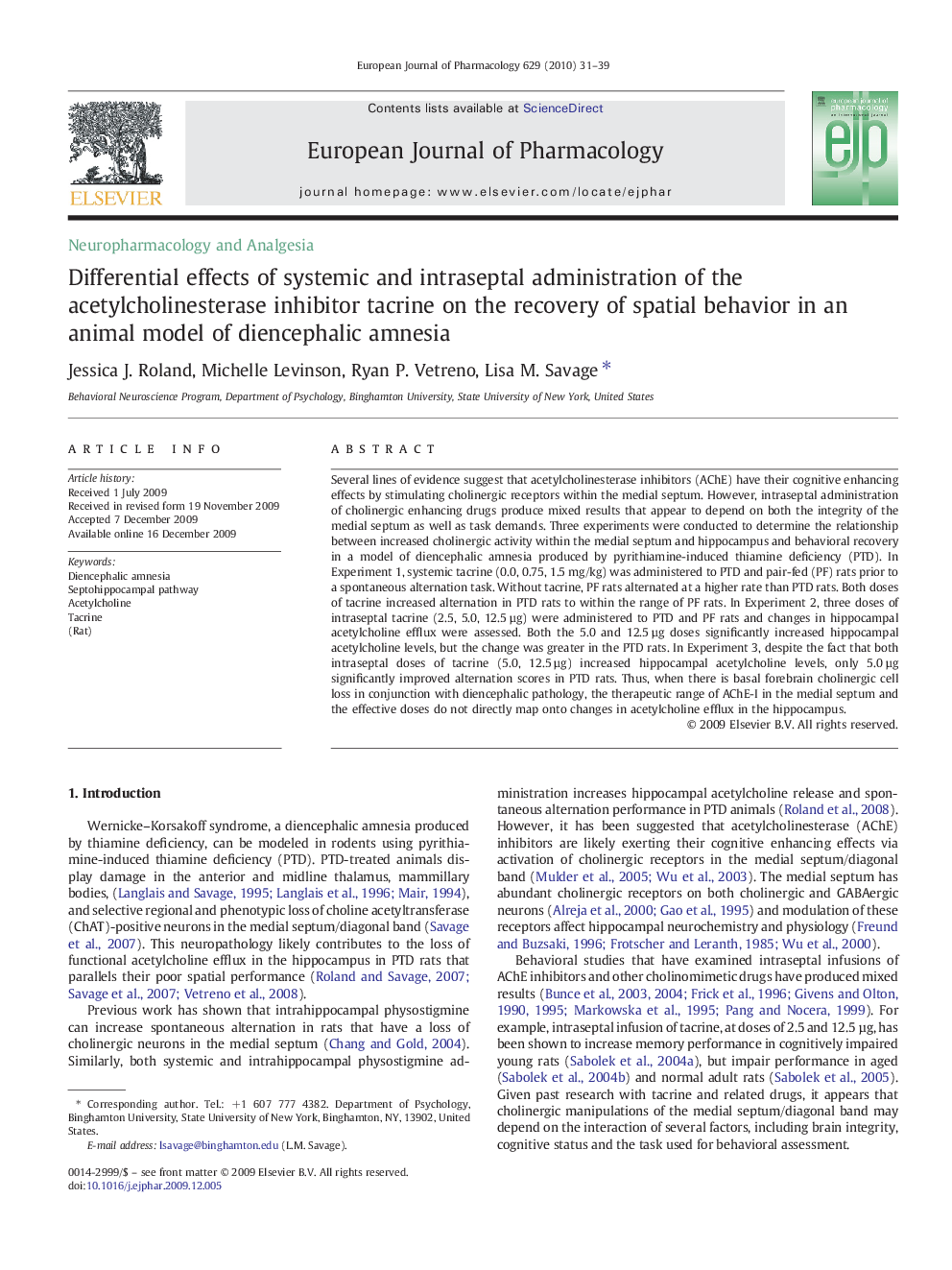| Article ID | Journal | Published Year | Pages | File Type |
|---|---|---|---|---|
| 2533882 | European Journal of Pharmacology | 2010 | 9 Pages |
Several lines of evidence suggest that acetylcholinesterase inhibitors (AChE) have their cognitive enhancing effects by stimulating cholinergic receptors within the medial septum. However, intraseptal administration of cholinergic enhancing drugs produce mixed results that appear to depend on both the integrity of the medial septum as well as task demands. Three experiments were conducted to determine the relationship between increased cholinergic activity within the medial septum and hippocampus and behavioral recovery in a model of diencephalic amnesia produced by pyrithiamine-induced thiamine deficiency (PTD). In Experiment 1, systemic tacrine (0.0, 0.75, 1.5 mg/kg) was administered to PTD and pair-fed (PF) rats prior to a spontaneous alternation task. Without tacrine, PF rats alternated at a higher rate than PTD rats. Both doses of tacrine increased alternation in PTD rats to within the range of PF rats. In Experiment 2, three doses of intraseptal tacrine (2.5, 5.0, 12.5 µg) were administered to PTD and PF rats and changes in hippocampal acetylcholine efflux were assessed. Both the 5.0 and 12.5 µg doses significantly increased hippocampal acetylcholine levels, but the change was greater in the PTD rats. In Experiment 3, despite the fact that both intraseptal doses of tacrine (5.0, 12.5 µg) increased hippocampal acetylcholine levels, only 5.0 µg significantly improved alternation scores in PTD rats. Thus, when there is basal forebrain cholinergic cell loss in conjunction with diencephalic pathology, the therapeutic range of AChE-I in the medial septum and the effective doses do not directly map onto changes in acetylcholine efflux in the hippocampus.
